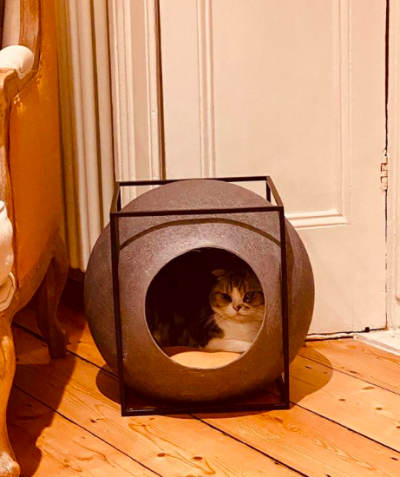Viral Reactions: The Smugness of Celebrity Self-Isolation

The rush to elevate self-isolation to Olympian heights as a way to combat the spread of COVID-19 has gotten to the celebrities. Sports figures are proudly tweeting and taking pictures from hotel rooms (Formula One driver Lewis Hamilton being a case in point). Comics are doing their shows from home. Thespians are extolling the merits of such isolation and the dangers of the contagion. All speak from the summit of comfort, the podium of pampered wealth: embrace social distancing; embrace self-isolation. Bonds of imagined solidarity are forged. If we can do it, so can you.
The message of warning varies in tones of condescension and encouragement. Taylor Swift prefers to focus on her cat. “For Meredith, self-quarantining is a way of life,” she posted on Instagram. “Be like Meredith.” Meredith, of course, had little choice in the matter. John Legend delivered a concert on Instagram, wife Chrissy Teigen beside towelled and quaffing wine. “Social distancing is important, but that doesn’t mean it has to be boring. I did a little at-home performance to help lift your spirits.” Then there was Arnold Schwarzenegger, who actually boasted two miniature ponies. “We will get through this together.” So good of him to let us know.
Others, like model Naomi Campbell, can barely hide their revelations, moments of acute self-awakening amidst crisis. “I’m learning what it means to put my busy or complicated life on hold and just to be still for a while, in one place, with hyper awareness of the people and spaces directly around me and the moment to moment actions I am making.” A long dormant, cerebral world, awoken by a virus.
Similarly, singer Lady Gaga has found that within that deodorised, heavily marketed form of celebrity is the heart of a human. “This is reminding me I think a lot of us,” she reflected on Instagram “what it is to both feel like and be like a human being.”
Self-isolation has seen the rich with their entourages making an escape for holiday homes and vast retreats. Then come the eccentric and the slightly ludicrous options: the well-stocked and equipped bunker; the safe room. Such an approach is far more representative of the estrangement between haves and have-nots. “One of the best options is in Middle America,” comes the recommendation from Adam Popescu in Vanity Fair. “If you’re part of the 1%, why wait or sluggish government support when you can burrow 175 feet underground in a refurbished Air Force missile silo in rural Kansas that markets itself as a survival condo?”
The condo in question, the brainchild of developer Larry Hall, sports nine-foot think concrete walls, epoxy-hardened for good measure. Their purpose, ostensibly, is to withstand nuclear blasts. Current interest, however, is over a possible occupancy to ride out the coronavirus pandemic.
Florida entrepreneur Tyler Allen has already reserved his spot. While he has “other fortified locations”, he has a preference for the Kansas condo project. “Some of my hard facilities have a bunker but it doesn’t have protection for biological infection, doesn’t have protection for radiation. The survival condo has layering; it has it all. I’m protected from everything.” His advice is not cloying and congratulatory. It is more of the self-preservation school of thinking. Let the idiots watch the disaster unfold on phones, screens and social media while I go about arming myself for doom.
All this excitement about upright behaviour provides a noisy distraction from those who are simply in no position to isolate themselves. Food from increasingly bare counters must still be put on the table. Doctors and nurses must still perform their dangerous tasks in increasingly overwhelmed health systems. The menial jobs where contact with the public inevitably continue.
Then come those who have been in isolation well before the term came into vogue: the forgotten elderly, the impoverished, the vulnerable. But even here, the celebrities lurk with message and instructions, waiting to pounce. Never let chances to do the good deed, and talk about it, go by. At the very least, it has presented opportunities to tell others to do good works for the poor. For actor Ryan Reynolds, “COVID-19 has brutally impacted older adults and low income families … If you can give, these orgs need your help.”
Reynolds and his wife Blake Lively have donated $1 million to be divided by Feeding America and Food Banks Canada. Lively, for her part, has a lesson. “Though we must be distancing ourselves to protect those who don’t have the opportunity to self-quarantine, we can stay connected,” she suggested in an Instagram post. “Remember the lonely and the isolated. Facetime, Skype, make a video.”
As with other forms of life, combating disease comes with its hierarchies. Luxuries and miseries are unevenly distributed. The allocation of resources is skewed. But valiant efforts are made to suggest that the well moneyed celebrity shares the lot with the proles and the hoi polloi. An Esquire contribution does just that, though the effort is risibly unconvincing. “Celebrities, they’re just like us!” it cheekily proclaims. “Self-isolating in their cavernous houses, dancing up their marble stairs, pouring themselves a crystal tumbler of citrus-scented tequila and sauntering into the home-cinema to wait for all this to blow over.”
*
Note to readers: please click the share buttons above or below. Forward this article to your email lists. Crosspost on your blog site, internet forums. etc.
Dr. Binoy Kampmark was a Commonwealth Scholar at Selwyn College, Cambridge. He lectures at RMIT University, Melbourne. He is a frequent contributor to Global Research and Asia-Pacific Research. Email: [email protected]
Featured image: For Meredith, self quarantining is a way of life. Be like Meredith. (Source: Taylor Swift’s instagram)

